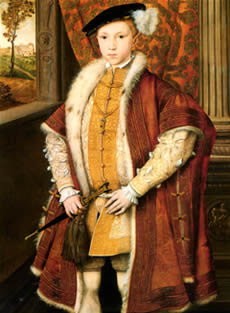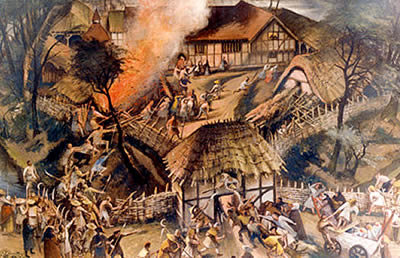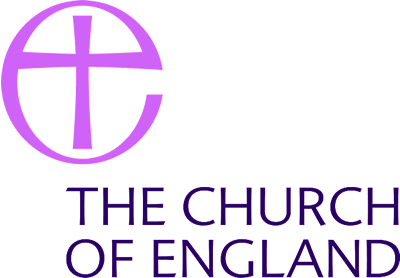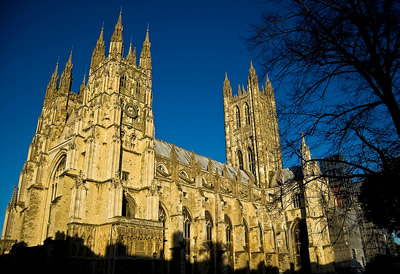 |
| Queen Elizabeth I |
Elizabeth was born the second daughter of King Henry VIII. King Henry had the marriage to his first wife, Catherine of Aragon, annulled as she had given birth to a daughter, Mary, and he had started a romance with Anne Boleyn, whom he married.
She gave birth to Elizabeth on September 7, 1533, and although Anne Boleyn was pretty, intelligent, witty, clever, and a devout Protestant, her inability to give Henry VIII a son essentially caused her to be executed, although the charge leveled against her was incestuous adultery.
As a result, Elizabeth, who was three when her mother was executed, grew up secluded from the court. When Henry VIII died in 1547, he was succeeded by his sickly son Edward VI. By this time Elizabeth could speak and read not only English and Latin, but also ancient Greek, French, Italian, and Spanish.
She managed to keep a low profile during the reign of Edward VI and tried to do the same during the reign of her older sister Mary, after Edward had died in 1553. Mary, however, was a devout Roman Catholic and determined to rebuild the Catholic Church in England. Elizabeth, by contrast, was Protestant but she was careful to keep herself removed from plots against her Catholic sister.
The most serious of these was Wyatt’s Rebellion of 1554, which sought to depose Mary and replace her with Elizabeth. Even though she was not involved, Elizabeth was, nevertheless, arrested and placed in the Tower of London, making the entry by boat through “Traitor’s Gate.”
The death of Mary on November 17, 1558, led to Elizabeth’s succeeding to the throne. She was crowned on January 15, 1559, by Owen Oglethorpe, bishop of Carlisle, as the Roman Catholic archbishop of Canterbury, Reginald Pole, had already fled and refused to take part in the coronation.
It was to be the last coronation where the Latin service was used; all subsequent coronations except that of George I in 1714 were in English. In 1559, Queen Elizabeth enacted the Act of Uniformity whereby all churches had to use the Book of Common Prayer.
In the same year, she also signed into law the Act of Supremacy whereby all public officials had to acknowledge, by oath, Elizabeth’s right, as sovereign, to be head of the Church of England. In these two acts, her main adviser, who would remain as such for the rest of her reign, was Sir William Cecil (later Lord Burghley).
There were many stories regarding whether Queen Elizabeth I wanted to marry. Certainly she enjoyed a long affair with Robert Dudley, earl of Leicester, whom she appointed as master of the Queen’s Horse.
She was acutely aware of her sister’s bad move in marrying Philip II of Spain, and anxious not to marry any foreign Roman Catholic prince, although there were moves made by the French. With constant plots against Elizabeth, she faced trouble in Scotland from Mary, Queen of Scots, who was her first cousin once removed. Mary was the granddaughter of Margaret, sister of Henry VIII.
Mary was, however, unpopular in Scotland and after the death of her first husband in France, she returned to Scotland, where her second husband was murdered, most probably by the man whom she was subsequently to marry, Lord Bothwell. Mary was hounded out of Scotland, fleeing to England, where she was arrested and held in close confinement for the next 18 years.
In 1569, the Northern Rebellion led by Thomas Howard, the fourth duke of Norfolk; Charles Neville, the sixth earl of Westmoreland; and Thomas Percy, the seventh earl of Northumberland, failed, although it led to Elizabeth’s being excommunicated by the pope.
With Elizabeth allying herself to the Protestants in France and the Netherlands (United Provinces), she viewed the developments in Europe with concern, especially when Philip II of Spain became the king of Portugal after the last Portuguese king, Henry, died childless.
There was also a rebellion in Ireland, and when Sir Francis Walshingham, Elizabeth’s main spymaster, uncovered the Babington Plot implicating Mary, Queen of Scots. Mary was put on trial for treason, sentenced to death, and beheaded on February 8, 1587, at Fotheringay Castle.
With Mary having willed her lands to Philip II, Elizabeth was facing a major threat from the Spanish king, who was also angered at the way in which English ships attacked his treasure ships and others bringing wealth from the Americas. Francis Drake, who circumnavigated the world in 1577–79, Walter Raleigh, and John Hawkins, and Martin Frobisher were among the “sea dogs” preying on the Spanish ships.
In 1588, Philip II sent a massive navy and expeditionary force known as the Spanish Armada against England. By a mixture of luck and good planning, the Spanish Armada was crushed, with a few ships managing to escape around the northern coasts of Scotland and Ireland.
Queen Elizabeth I’s speech at Tilbury, rallying her soldiers and sailors, is one of the most famous in history: “I know I have the body of a weak and feeble woman, I have the heart and stomach of a king, and a king of England too.”
The reign of Queen Elizabeth I, known as the Elizabethan age, was also a period of great prosperity in England, with the Levant Company leading to the later formation of the East India Company. Many books were published, and many playwrights, notably William Shakespeare and Christopher Marlowe, wrote large numbers of plays.
During the 1590s, Elizabeth continued to receive threats to her rule in Ireland, and in 1599 a plot was mounted by Robert Dudley’s stepson, Robert Devereaux, the earl of Essex, who had emerged as Elizabeth’s new favorite. Essex was executed on February 25, 1601. Elizabeth gradually came to see that her heir would be King James VI of Scotland, and when she died on March 24, 1603, James succeeded her.



















